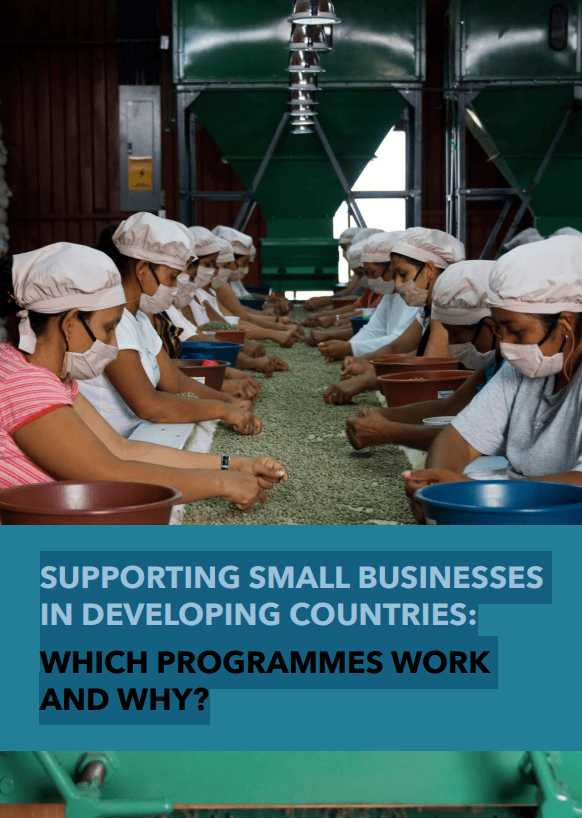Why inclusive finance must mean more than credit lines for small firms
Floris Faber is Director of ACT Alliance EU. The views expressed are his own.
From infrastructure to inclusion
A few weeks ago, the Tony Blair Institute and the Gates Foundation hosted a discussion on how to close the financing gap for small and medium enterprises. Around the table were the European Commission’s Directorate-General for International Partnerships (DG INTPA), the European Investment Bank (EIB), the Government of Djibouti, and Stanbic Bank. The panel reflected how development-finance actors are now framing the challenge of supporting smaller firms, local banks, and women entrepreneurs – areas often overlooked in large-scale investment debates.
Practical examples within Global Gateway
While the European Union’s Global Gateway remains best known for its major infrastructure projects in energy, transport and digital connectivity, some elements of the initiative now address inclusive finance and SME support alongside its flagship infrastructure projects. Whether this signals a broader rebalancing is still early to judge, but the examples discussed were instructive: a €100 million EIB – Stanbic Uganda facility for women micro-clients and climate-related SMEs, and Djibouti’s work on digital identification to expand financial access. These initiatives are modest within the overall portfolio but show how existing instruments might reach smaller actors if adapted with that purpose in mind.
For civil-society organisations such as ACT EU, these developments raise important questions. How can such instruments be shaped to serve people in poverty, rather than only those already within formal markets? And what does “partnership” mean when the design of financial tools increasingly takes place between governments, development banks and large foundations – with as yet limited involvement of civil society or local communities in their design or oversight?
Lessons that still hold true
The issues raised in the discussion connect closely to what ACT Alliance members explored ten years ago in a joint study led by Christian Aid, Act Church of Sweden, DanChurchAid, Finn Church Aid, and ICCO (now part of Cordaid). The report, Supporting Small Businesses in Developing Countries, found that donor support for SMEs was often limited to credit lines or investment-climate reforms that mostly benefited larger firms. What worked better were programmes that combined finance with capacity-building, public procurement, local-content policies, and stronger women-led enterprises. One example stood out: Brazil’s public food-procurement scheme, which allowed cooperatives like COOTAP to sell directly to schools and hospitals. The programme remains in operation, albeit with ongoing challenges, and demonstrates how public demand, combined with finance and technical support, can make growth more inclusive.
The scale of the challenge
For perspective, speakers at the event contrasted the employment power of small businesses with the limited job creation of the technology giants. In the United States, for example, 99.9 per cent of private firms are small businesses, together employing about 63 million people, according to one of the panellists. In Africa, where youth-employment pressures are immense, the message is clear: most jobs come from small firms. Strengthening them will require action not only through global initiatives such as Global Gateway but also by domestic governments and local financial systems.
Globally, IFC estimates that between half and two-thirds of MSMEs in developing economies remain under-served or unserved by financial institutions, based on its MSME Finance Gap assessment.
Development banks face what insiders call the local-currency problem – the difficulty of lending affordably in domestic currencies over the long term. The EIB’s partnership with the Gates Foundation and Stanbic Bank in Uganda blends concessional and commercial finance in local currency to spread risk rather than push it onto borrowers, offering one example of innovation within the wider Global Gateway framework.
Finance, fairness, and policy
Much of what ACT members observed a decade ago appears still to hold true. Finance alone does not bring inclusion. SMEs also face non-financial constraints – unreliable electricity, weak infrastructure, political instability, and corruption – that limit growth even when credit is available. Joined-up approaches linking finance, policy, and basic services are far more effective.
Women entrepreneurs, in particular, continue to face deep-seated barriers, from lack of collateral and childcare to bias in credit scoring and taxation. Effective public policy can help:
- Public procurement and local content rules that give small producers real market access.
- Infrastructure investment that reaches rural areas where women’s enterprises often operate.
- Digital ecosystems that connect informal entrepreneurs to formal finance, as Djibouti is now doing through national ID systems.
Each of these measures helps ensure that finance serves social outcomes rather than financial ones alone.
Recent reporting from Cambodia points to concerns about household over-indebtedness linked to micro-loan schemes backed by international finance institutions. Investigations are ongoing, but the case highlights the importance of safeguards and protection when expanding access to credit.
The 2015 study highlighted how women-led SMEs often paid higher input costs and missed out on tax exemptions. In Vietnam, for instance, female-led firms in sectors such as food and garments faced higher VAT on inputs than male-dominated ones, cutting into already slim margins. It is a reminder that finance and fairness must advance together.
Participation and partnership
Inclusive finance is not only an economic matter but a question of governance. When guarantees and blended instruments determine how development money flows, civil society should be part of the conversation. The EU treaties commit the Union to work with civil society in development cooperation, and that should include participation in the design and implementation of Global Gateway and related development approaches. Without such involvement, the risk remains that decisions are guided more by financial metrics than by poverty-reduction or rights-based outcomes.
Looking ahead
Global Gateway is not going away. At ACT EU, we believe our task is to engage with it critically but constructively, asking and contributing to how its tools can genuinely advance the EU’s commitments to poverty eradication, human rights, and inclusive development. The discussion in October pointed to openings.
Experience shows that comprehensive approaches combining finance, capacity-building, fair regulation, and participation achieve more lasting results than isolated interventions. If part of Global Gateway’s €400 billion ambition by 2027 genuinely strengthens local economies and civic participation, that would be progress worth noting. Until then, the challenge remains the same: to connect liquidity to livelihoods, data to inclusion, and guarantees to human outcomes – and to keep people at the centre of European development cooperation.
Floris Faber is Director of ACT Alliance EU. The views expressed are his own.
See also: Supporting Small Businesses in Developing Countries: Which Programmes Work and Why? – Key takeaways from the ACT Alliance EU study Supporting Small Businesses in Developing Countries (2015). The study identified practical approaches that link finance, public procurement, and women-led enterprise support to build inclusive and resilient local economies.
Related reading: Nobel Laureates, Infrastructure and Institutions in Development – reflections on how effective institutions and inclusive policy frameworks shape sustainable development.
Photo credit: Christian Aid/Les Stone



